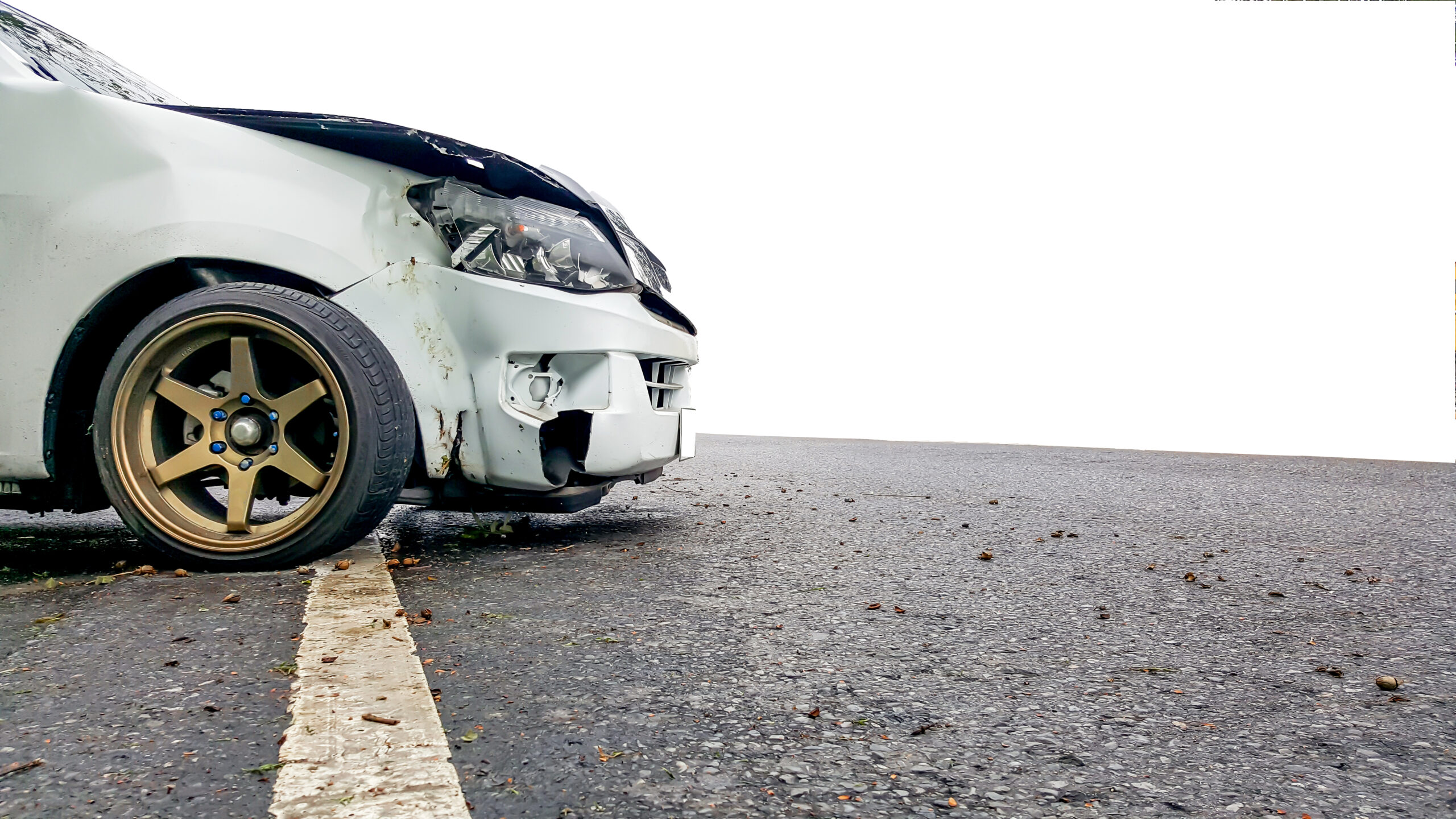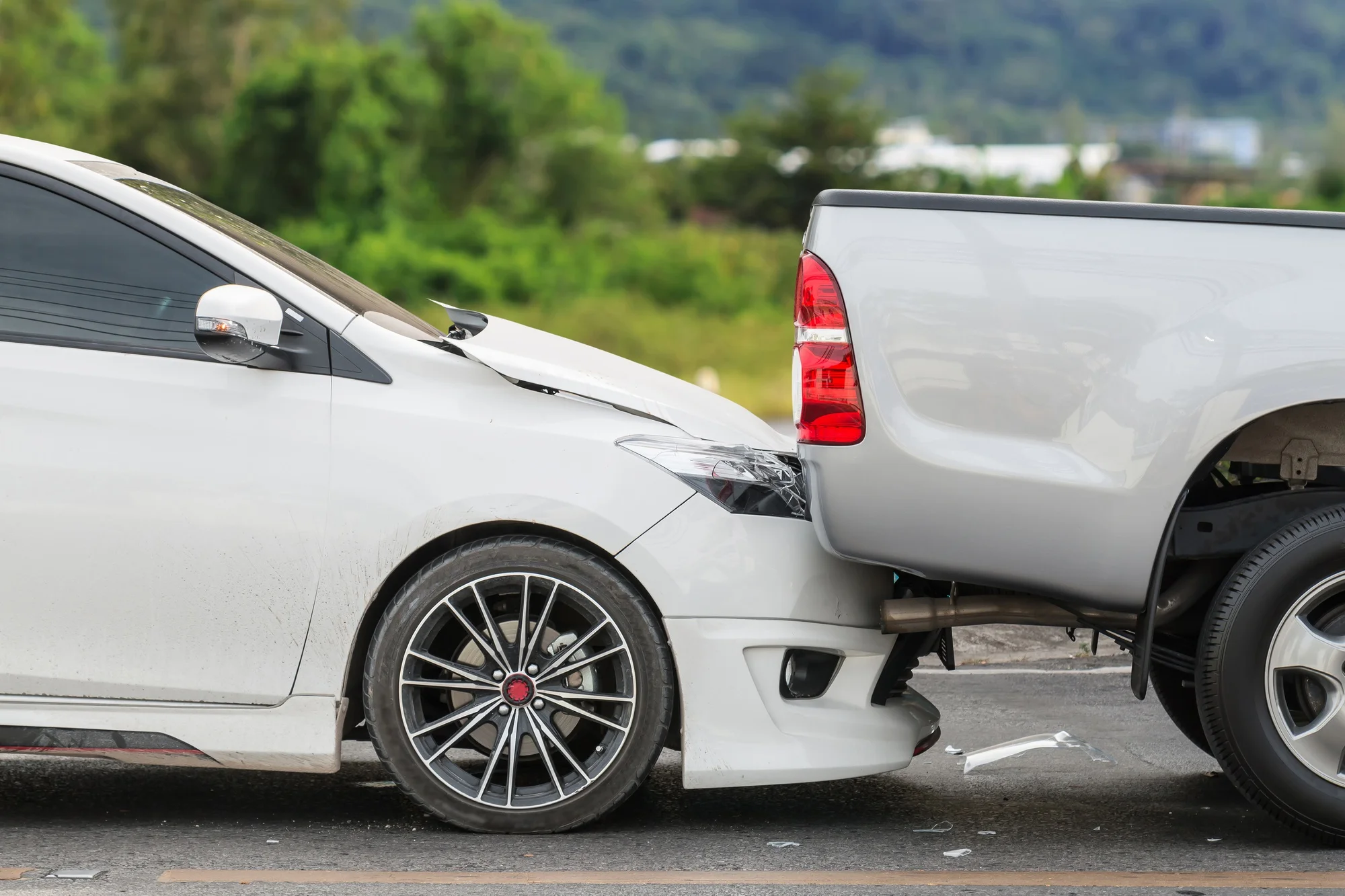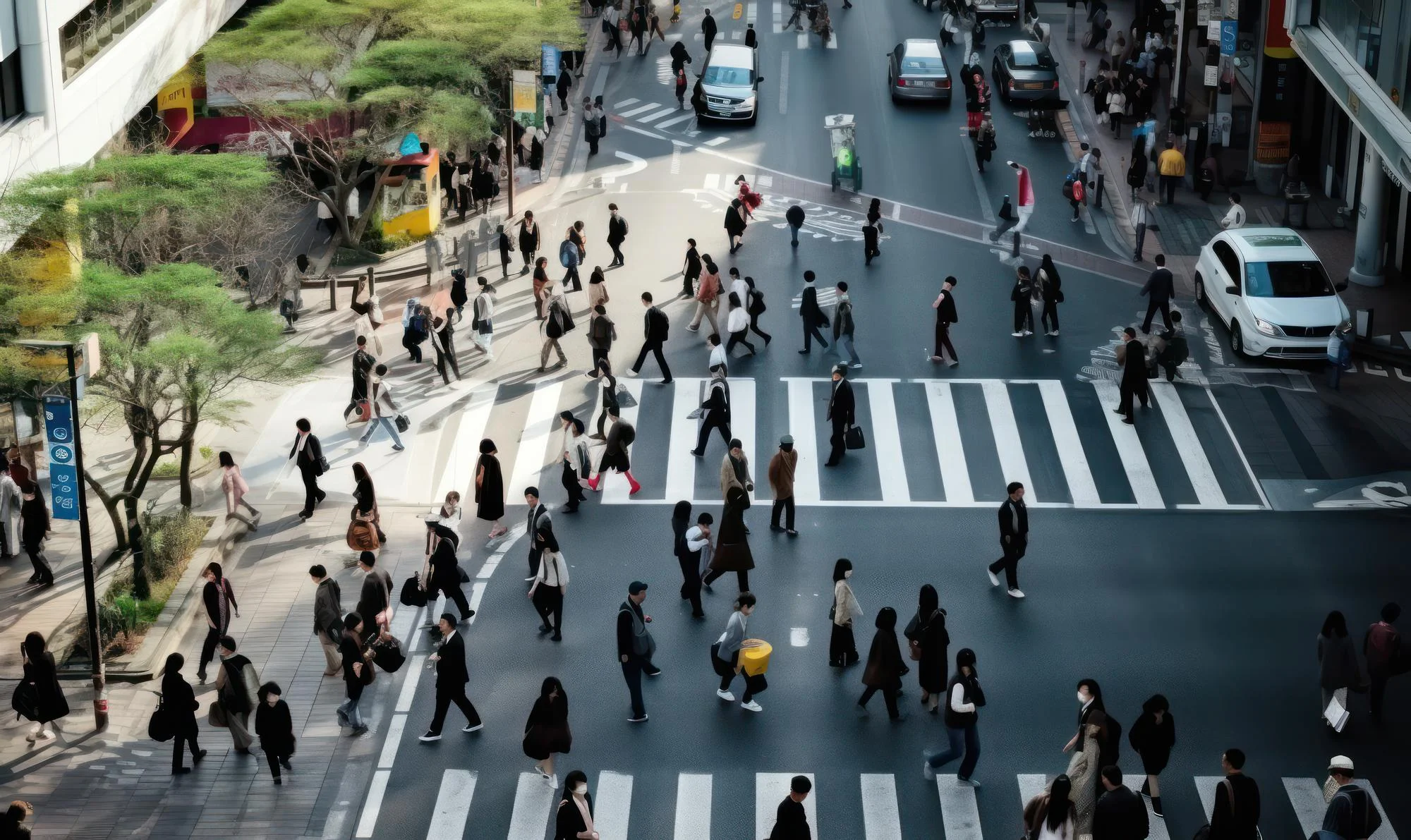Figuring out who’s at fault in a car accident can be tricky, especially if there are multiple vehicles involved. In California, the fault is usually determined by insurance companies who evaluate the events of the car accident. To determine who’s at fault, insurance companies look at police reports, photos, videos, and witness testimony, medical documents, and property damages. The at-fault party would be liable for damages related to the crash. However, sometimes it can be challenging to determine fault due to shared liability between drivers. If you have been a victim in a car accident, making sure that you collect as much evidence as possible can help insurance adjustors determine fault. If the payout provided by insurance isn’t enough to cover damages, then the case may move through civil courts where a judge will determine fault.
California is an At-Fault State
All states in the U.S. follow two main systems regarding compensation for car accidents:
- At-fault system
- No-fault system
Most states including California are at-fault states for car accidents. Under this system, California drivers who are liable for an accident are responsible for paying any costs sustained by the other party if they are found negligent in a car accident. The at-fault driver can be held responsible for economic damages including medical expenses, personal property damage, and loss of income. They are also responsible for non-economic damages including pain and suffering, loss of consortium, loss of companionship, and emotional distress.
If you were injured in a car accident but are not at fault, you are entitled to claim compensation from the responsible party. However, you must prove liability before you can receive any compensation. It is also important to note that the amount of compensation is typically determined by the amount of damages incurred and the amount of liability shared between both parties. Since California is a comparative negligence state, a victim of a car accident can also share a portion of the liability if they were deemed partially at fault.
Who Determines Fault
In California, car accident fault is typically determined by the insurance company. Insurance adjusters will review statements from doctors, the police, and the parties involved in the accident to help make their judgment. Police can also contribute to at fault judgements if one of the parties involved in the accident was deemed guilty of breaking any traffic laws. If a victim decides that the insurance payout was not enough, a personal injury claim can be filed. If a car accident liability case goes to trial, then a judge will ultimately make the final determination of who the at fault party was.
Making Sense of California’s Auto Accident Fault Determination Rules
In California, there are two ways to prove that someone is responsible (at fault) for an accident:
- Negligence through common law
- Statutory negligence
Common Law Negligence
To prove negligence under common law, four elements must be established including:
- Duty of care – This element requires that individuals drive their vehicles using a reasonable amount of caution that is expected of someone who has received their driver’s license. This generally means following traffic laws, driving responsibly, avoiding accidents, and being situationally aware.
- Breach of duty – A breach of duty exists when one party fails to operate their vehicle safely as expected by the reasonable expectations outlined under duty of care.
- Causation – Causation or cause in fact requires a victim to show that the defendant’s breach of duty was responsible of his or her injury and losses.
- Damages – This element requires the victim prove that he or she sustained injuries because of the car accident.
Under the legal principles of negligence, when a person acts in a reckless way that causes injury to another person, that careless person can usually be held legally responsible for causing any harm. However, to hold that person responsible, the victim must prove the four elements of negligence listed above.
Statutory Negligence
Statutory negligence is more easily determined when enough evidence exists to prove that the other driver violated California Vehicle Code or other traffic rules or regulations. This will usually be found within a police report and the guilty party will be identified as in violation of state laws. When this happens, negligence is assigned without the need for further examination or evidence, and this is referred to as negligence “per se.” Typically a driver will be found negligent per se if they are guilty of any of the following:
- Aggressive driving: Reckless driving behavior like tailgating, swerving, speeding, or otherwise acting like a threat to other drivers.
- Distracted driving: Driving while not giving the road the driver’s complete attention. Could be impaired by texting, talking on the phone, eating, checking a map, or giving attention to passengers.
- Driving under the influence: Driving under the influence of drugs or alcohol when operating a motor vehicle.
- Failing to fix broken, damaged, or recalled parts: Failing to keep the car and it’s different parts like taillights or breaks in operational condition can cause an accident where the driver would be held liable.
If a driver is found guilty of negligence per se, they would have to prove otherwise, or they will be held liable for an accident.
Understanding Comparative Negligence
Comparative negligence, also referred to as comparative fault, is a legal principle used to determine the relative liability of defendants and damages available to car accident victims. In other words, under California’s comparative negligence law, an injured victim can share varying degrees of responsibility which can in turn impact how much they are awarded in a personal injury claim.
When a defendant claims the plaintiff is partially responsible for the accident, the insurance companies or courts will decide the proportion of fault each party is responsible for as it relates to the victim’s injuries. Ultimately, the plaintiff’s total recovery will be reduced based on their share of fault for causing the car accident. For example, if a driver is involved in a car accident where he is found to be 20% at fault, under comparative negligence law, the damages he would be awarded would be reduced by 20%.
Evidence Used to Prove Fault in a Car Accident Claim
Evidence is necessary to prove fault in a car accident claim. An experienced car accident attorney can help you collect all the critical evidence necessary to prove your claim including:
- Medical reports – Records from the physician treating your accident-related injuries. This can include things like emergency room visit records, ambulance call sheets, diagnostic test results, medical office visits, physical therapy records, acupuncture treatments, IME reports, and x-rays or MRI records.
- Accident-related receipts or bills – Any receipts, bills, or documentation showing medical expenses, property damage, lost wages, or other accident-related costs.
- Photos and videos – Photography or video footage of the car accident scene, your injuries, or other crash-related damage.
- Witness statements – Statements from anyone nearby who witnessed the car accident.
- Expert testimony – Formal written or verbal statements from field experts including medical professionals and accident reconstruction specialists.
- Police reports – These documents will usually show how the incident occurred and the conditions in which they happened. This will be a critical piece of information when determining fault.
Police Reports Are Helpful in Determining Fault
If you were involved in a car accident, it is a good idea to call the police to the scene once you’ve made sure you’re safe. Some car accident victims don’t call law enforcement because they mistakenly think it’s a minor accident but you would never know the full extent of your injuries until you get a full medical evaluation. Additionally, calling law enforcement to the accident scene will enable you to obtain a police report which can be a critical piece of evidence to strengthen your car accident case.
Once you’ve called the police, an officer will come to the scene and take down a police report. This police report will be a summary of the police officer’s observation of the car accident scene and contain a summary of facts related to the crash.
A police report can help determine fault because it typically contains:
- Car accident details – Including vehicle positions at the time of the crash
- Weather conditions – Was it rainy or dark when the accident happened?
- Road conditions – This will help determine if there was debris or other road conditions that may have led to an accident.
- Skid marks – This usually helps determine when drivers attempted to slow down before impact.
- Driver statements – The police will take down statements from each party involved in the accident.
- Witness statements – If there’s anyone nearby who witnessed the accident, the police will take down their account of what they saw or heard.
- Vehicle damage – The police will take down notes of damage to all vehicles involved in the crash.
- Injuries – Any visible and apparent injuries sustained from the crash will be noted.
Along with other facts of the case, information from the police report will be considered when determining the fault in a car accident case. Police reports are important records that may be referred to when you seek compensation for your injuries. While you should contact the police for any car crash, it is especially important for serious accidents that result in injuries or $500 or more in property damage. Do not leave the scene of the accident and cooperate with authorities. Get their information or badge number so you can easily request a copy of the police report in case one isn’t provided at the scene. The police will also play a critical role in determining if any laws were broken that may have contributed to the car accident. In the event of any broken laws, the police can issue citations, further investigate, or issue an arrest which can solidify liability against the party at fault.
When a Driver Apologizes or Admits Fault
When a car accident occurs, some drivers may realize that they’re wrong and admit fault right at the scene. If a driver admits that they are at fault for causing an accident, the situation is generally pretty straightforward, and the claims can be processed normally.
At other times, a driver may not admit fault, but they may apologize after the accident. In this case, even if they did not admit fault, an apology could be interpreted as an admission of fault and could be used against them.
Fault in Rear-End and Left Turn Accidents
Rear end and left turn accidents are often the most cut and dry accidents when it comes to proving fault. When rear end accidents occur, it’s typically the fault of the person in the rear vehicle. Unless there are factors, like video evidence or witness testimony, that can prove that the driver in the front was acting dangerously, the fault is usually assigned to the driver who did the rear ending.
In the cases of left turn accidents, the vehicle turning left while passing through an intersection is typically at fault since the driver passing through an intersection has the right of way. The only circumstances when the turning driver would be free from liability is if the car going through the intersection was guilty of statutory negligence. In instances where the driver passes through an intersection had run a red light or stop sign or was driving at speeds much higher than the listed speed limit, partial or complete liability may be shifted to the driver guilty of breaking traffic laws.
Have an Experienced Car Accident Lawyer Help Your Claim
California is an at-fault state which means that anyone who was found to be at fault for an accident is responsible for paying the victim’s compensation. However, car accident claims can sometimes get really complicated– especially ones that involve multiple parties. An experienced car accident lawyer can not only protect your legal rights after a car accident but also make sure the fault is assigned to the correct party and help you obtain fair compensation for your losses. Having legal representation also protects you from getting taken advantage of by insurance companies. They are notoriously known for offering victims lowball settlements.
Mesriani Law Group has over 20 years of experience and an impressive track record of obtaining the maximum compensation for car accident victims. If you or someone you know has been hurt in a car accident, contact our law office to learn more about your legal options. We accept clients on a contingency basis and that means that if we don’t win your case, you don’t pay us anything. Keep in mind that there is a strict deadline for filing personal injury claims in California so do not wait to start your claim. Contact our law firm today at (866) 500-7070 for a free consultation.
Car Accident Fault FAQs
How is fault determined in a car accident California?
In California, car accident fault is determined by the insurance company. After a car accident, car accident victims will need to file a claim with their auto insurance company. Once a claim has been filed, an insurance adjuster will be assigned to the claim to investigate the accident. After their investigation, the insurance adjuster will decide regarding the driver who is at fault.
How insurance companies determine who is at fault?
After a car accident, the insurance adjuster will look into the details of the accident, contact witnesses, review medical reports, inspect the vehicle for damages, and consider details of a police report. After their investigation, the insurance adjuster will make a determination regarding the driver who is at fault.
Is CA a no-fault state for car accidents?
No. Most states including California are at-fault states for car accidents. As an at-fault state, California drivers who are liable for an accident are responsible for paying any costs related to injuries and property damage sustained by the other party.








